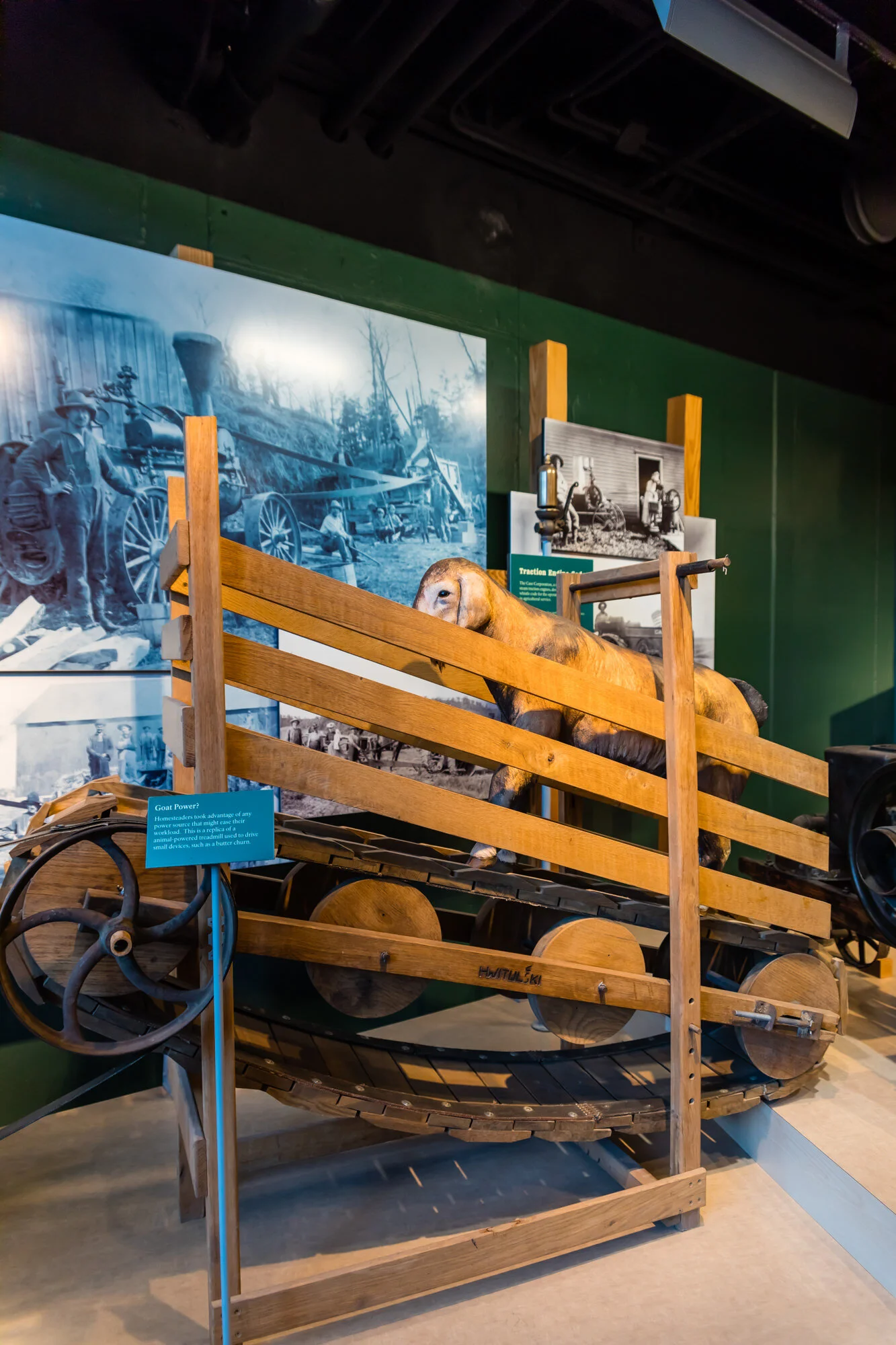Discover America at Homestead National Historical Park in Nebraska
/This post contains affiliate links, which means that at no additional cost to you if you click on one of the product links, we may earn a commission.
Crystal and I took a DNA test a few years ago to dive a little more into our ancestry. We are half American and half Japanese and have often wondered about our ancestors on our American side.
We made a visit to see our uncle, who is a farmer in Nebraska, this past summer and discovered that the Homestead National Historical Park was located near his home.
We didn’t want to miss the opportunity to visit the Homestead National Historical Park as it holds the largest database of Homestead Records, which meant that we could do a little digging into our ancestry.
We wanted to dive into this database to see if our great grandparents were part of the Homestead Act that mobilized the American dream to own land.
You may be wondering why we just didn’t ask our uncle about our ancestors, but we did and surprisingly, he didn’t have a ton of information to share with us.
Homestead Act of 1862
Have you ever seen the 1992 film, “Far and Away”, starring Nicole Kidman and Tom Cruise?
If you have, then you have a little bit of insight about the Homestead Act. This film was based on two Irish citizens who traveled to America in hopes of claiming free land in the West.
Homestead National Historical Park entrance
That’s essentially what the Homestead Act set out to accomplish. This act granted 160 acres of public lands to anyone who agreed to work on the land and improve it over a five-year period.
U.S. citizens, freed slaves, new immigrants (intending to become naturalized), single women, and people of all races were eligible to take advantage of the Homestead Act.
Twenty-five thousand Europeans, most of them German, crossed the Atlantic in the first half of 1862 to take advantage of new opportunities.
Our great grandfather is German, so we considered the possibility that he could have taken part in the Homestead Act during this time.
Free Land ads
Why Build the National Monument in Nebraska?
The site of the original homestead cabin was built in Beatrice, Nebraska thus the reason for having the national historical park built there.
President Franklin D. Roosevelt signed the legislation to create the park on the site of Daniel Freeman’s homestead.
Daniel Freeman is one of the first people to file a claim under the Homestead Act and legend has it that he filed his claim 10 minutes after midnight on January 1, 1863.
Corn fields in Beatrice, Nebraska
Homestead National Historical Park
The Homestead National Historical Park (previously called Homestead National Monument of America) encompasses several elements: Homestead Heritage Center and Museum, Education Center, Freeman School, Freeman Cabin, and the Three Miles of Trails.
Education Center
When we put the Homestead National Historical Park address into Google Maps, it took us to the Education Center. When we walked in, the museum docent was quick to greet us and immediately began sharing a ton of information.
At the time of our visit, there was a quilt exhibition and the center was concentrated on the topic of women. One of them being, “The Journey of a Woman on the Homestead”.
Quilting in progress at the Education Center exhibit
Quilt of Elizabeth Cochran Seaman
Creative quilt design of a dress
From the Education Center, there was an option to hike through the trails to the museum. The trail included points of interest like the site of the original Freeman Homestead Cabin to the site of the Freeman Brick House.
We wish we had time to explore the trails; however, we were short on time as we were heading to our uncle’s farm later in the afternoon.
Homestead National Center and Museum
Homestead Records
We were really looking forward to looking through the museum’s extensive Homestead Records Database. We were prepared with our family tree of names and asked one of the employees for some assistance navigating the database.
It was a bit confusing when we first hopped on their computers because the database had a ton of information. We were a bit overwhelmed and didn’t know where to begin researching. With a little guidance from the staff, we were able to input several names from our family tree into the database.
We did find our ancestors in the directory, but none that lead to records indicating they had their names attached to a Homestead.
Homestead Entry paperwork
Homestead records database
Our uncle is a farmer just 30 minutes away from the museum and the farm has been in the family for over 100 years. Apparently, our great grandfather acquired the farm in the early 1900s, but he was not the original Homestead owner.
Our cousin Gwen has done a lot of research regarding this and, as far as she can tell, our grandparents bought the land from a Homesteader. If this is the case, the Homesteader did not keep the land for long before selling it to our family.
Our uncle’s farm in Nebraska
Old farm house magazines
Homestead Life
The museum did a fantastic job giving us a glimpse into what life was really like as a Homesteader. Farm life was harsh and in fact, many people did not survive. Moving to a new land and starting from scratch with absolutely nothing is almost unimaginable.
It’s no wonder that many did not survive the harsh realities of building a home and cultivating land from scratch. We’re amazed that some people actually survived this crazy journey.
It was also fascinating to learn about all the new farming inventions that came about during this time. Inventions like barbed wire and plowing equipment were vital to the success of their new found land.
Homestead National Museum
Farming equipment display
Reading about the Homestead expansion
American Indians
The Homestead Act was great for building America, but a horrific tragedy for American Indians.
The American government forced American Indians out of their land and, not surprisingly, this greatly affected their livelihoods and population.
The tragic history of Native Americans being forced to give up their lands
American Indians were relocated to lands that couldn’t cultivate crops and assimilated them into the American idea. Indians were given land in exchange for renouncing their tribe, traditional clothing, and way of life.
One of the saddest things we learned was how the government took American Indian children away from their families to assimilate them. When these children eventually returned home to their family, they had no sense of their culture and, even worse, couldn’t speak the native tongue.
The children were no longer able to communicate with their parents. Sadly, all of this was ill-intentioned by the government to decimate American Indians.
Display of American Indian land loss
Final Thoughts
It’s strange that we never learned about this in-depth in school. We think it’s a part of our history that we should all be aware of since the Homestead Act is what materialized the American Dream.
We don’t have kids so we don’t know if this is something that is in the school curriculum nowadays, but if it isn’t, we certainly think it should be.
Homestead National Center and Museum
Unfortunately, we didn’t have time to explore the entire monument and regret underestimating how much time we needed here. If we had more time, we would have made a stop at the Freeman School and the trails outside.
Luckily, we have family in Nebraska, so we hope to return soon and continue where we left off.
Where To Stay
We stayed at the Holiday Inn Express & Suites Beatrice. From the hotel, the museum was less than 10 miles away. The hotel is also near several dining options and a Walmart.
Holiday Inn Express in Beatrice, Nebraska
HOMESTEAD NATIONAL HISTORICAL PARK
8523 W. State Highway 4
Beatrice, NE 68310
Hours: Open daily. Hours vary seasonally
Fee: Free (donation box available on-site)
















































